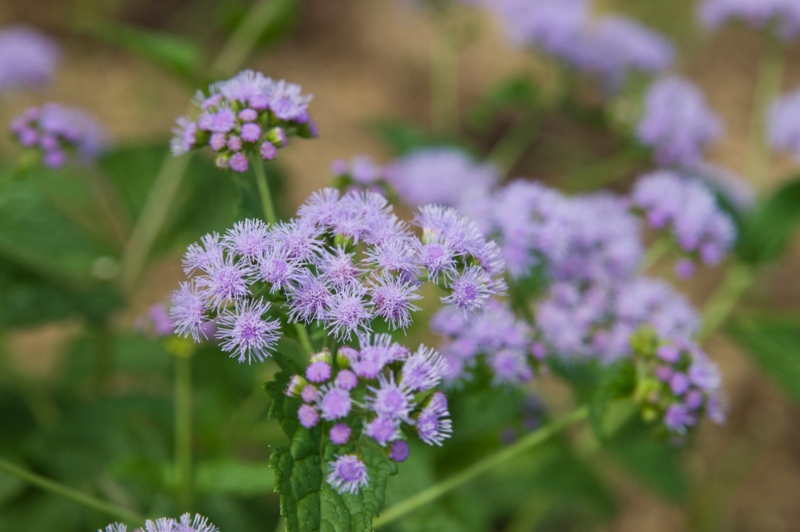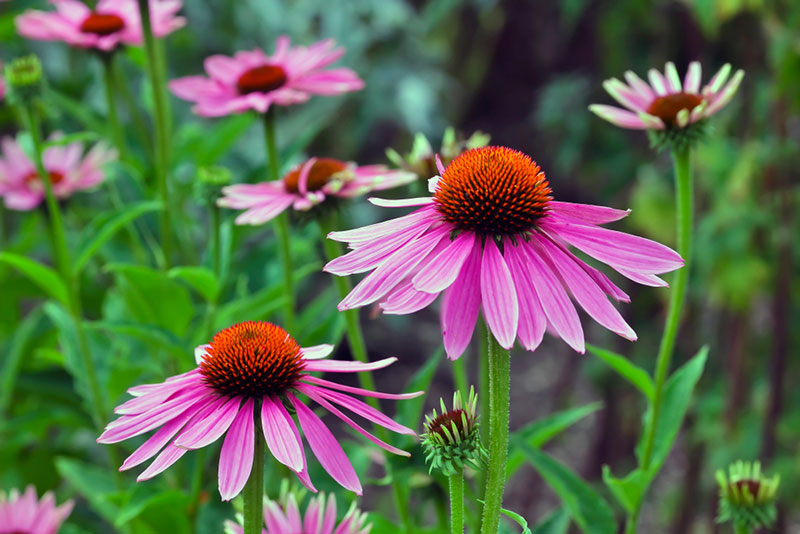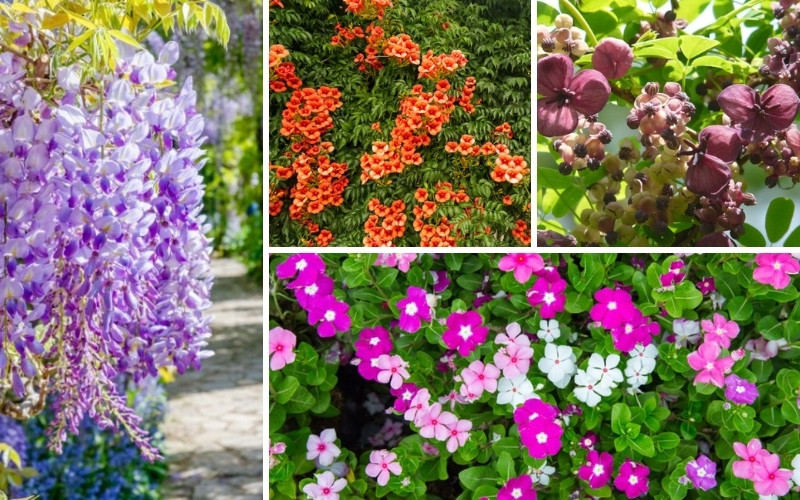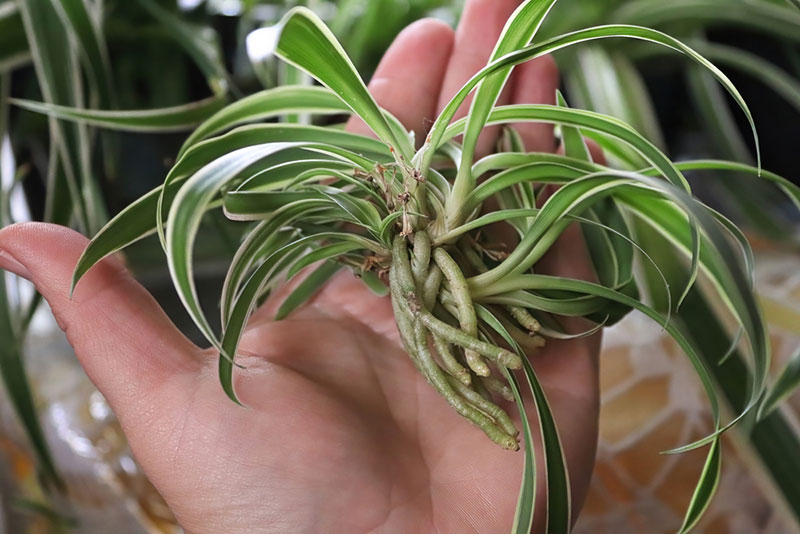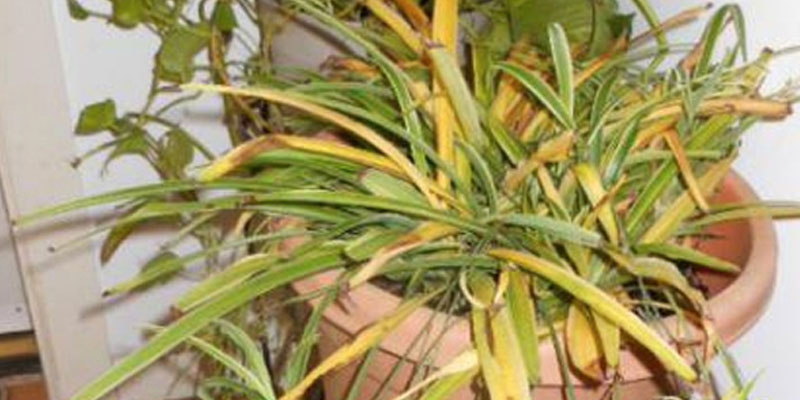The spider plant (Chlorophytum comosum) is a very adaptable houseplant that can be found in many homes. It is typically easy to care for, and it will grow well in a variety of environments. If you happen to go away and forget to water your spider plants, the tips may become brown, but it will most likely be fine for a few weeks until you return.

Spider plants are beautiful, but they do not produce bright flowers for your enjoyment, just tiny white blooms which are actually very pretty. The leaves resemble a narrow blade of grass, and the leaves dangle downward, which will look amazing as a hanging plant in your living space.
I can recall my mother having spider plants for as far back as I can remember. One memory from when I was just a girl that I remember fondly is one where my mother and I would take the baby spiderettes and plant them into pots to give to our loved ones. Being the hardy plant that this is, it is extremely difficult to kill, so I still have that same spider plant today that I had in my room as a child. You can have the same experience with your child, so I created this guide to help you know how to care for these plants and how to plant new ones to share with others.
How to Plant and Care for Spider Plants
Spider plants typically do the best in a planted environment, so let’s start at the base of the plant with the preparation of the soil.
Soil Preparation
Since these plants like to grow in pots, you will need to choose one that is four to six inches in diameter for a young plant. Clay pots are not optimal options because this plant will have no place for the roots to grow, which can lead to a broken pot. A free draining planter is going to be the best planter for this fast growing plant.
Spider plants also need to be planted in a soil that is free-draining as well. General planting soil is fine for this plant, but you will not want to use any soil that is fertilized. Fluoride can actually cause damage to the plant, so you need to steer away from any growing medium that will introduce that mineral to the plant. I find that an organic mixture of compost, peat, loam, and coarse sand is perfect.
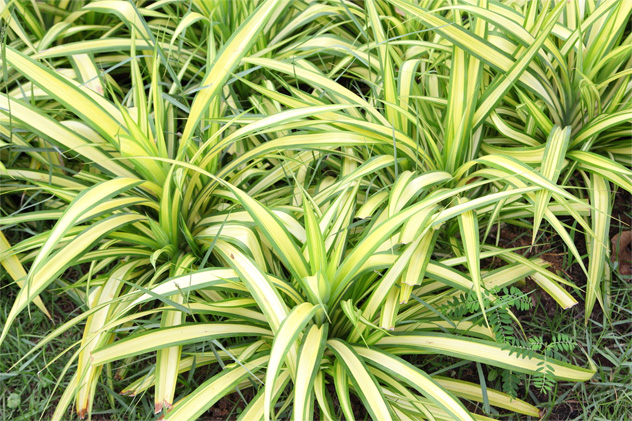
Water Requirements
During the growing months, these plants require a lot of water, but their consumption will slow in the winter. When you water your spider plant, soak the soil evenly and generously, but then wait a while until you water it again. These plants like to have the soil dry out a little between watering because the roots tend to hold a lot of water, which can cause root rot if the plant is over-watered.
As I already stated, Fluorine can damage the plant, so be cautious about using tap water. Distilled water is the best option for watering spider plants, or if you have an aquarium, your plant will love some of the water from the fish tank once in a while.
How to Grow Spider Plants from Seeds
To successfully grow a spider plant form a seed, you will need to know when you can collect the seeds. Once the blooms start dying out, you will notice that they have been replaced with small green pods. These pods carry the seeds but don’t attempt to collect them until they have had some time to dry out. The best way to make sure that you can collect the seeds is to place a few paper towels under the plant. Once the pod dries up and begins to crack, the seeds will fall to the area that you prepared.
The seeds look like small flat seeds like those that you would find in a pepper, but they will be black in color. Once you have the seeds, don’t wait to plant them because they will not keep well. Use a starter pot to place the seed about ½ an inch deep, cover it with the organic soil mix I mentioned, and wait for it to grow. Spider seedlings are fragile, so do not attempt to move them until they have three or four leaves.
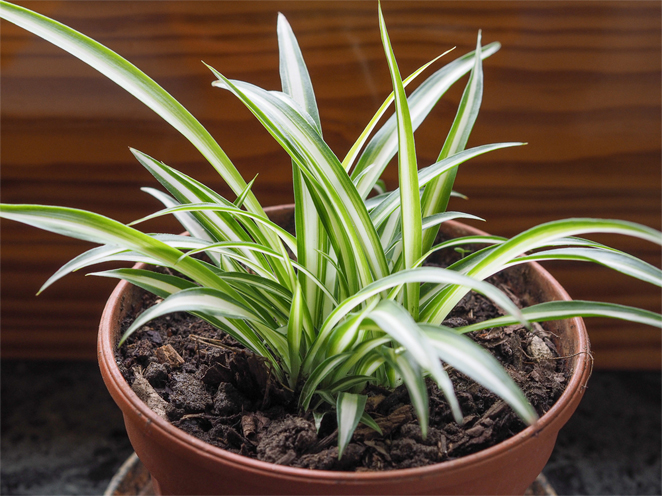
Growing Spider Plants from Spiderettes (Spider Plant Babies)
These baby spider plants can be separated from their mother and planted in their own flower pot to grow and flourish on its own. If the spiderette has begun growing roots, it can be planted in soil. With water and bright light, the plant will soon sprout new growth. If the roots have not formed, hang the babies over a container of water with only the root area making contact with the water. Once the roots begin to form, you can plant these spiderettes as well.
How To Winterize
Spider plants do not like cold weather or frost, but since they are typically grown indoors, that should not be much of an issue. If you do have your plants outside during the warm summer months, then keep them in a pot that you can easily just bring inside for the winter.
List of Common Problems That Spider Plants Have
One issue that is commonly seen in spider plants is that the tips of the leaves turn brown. This does not mean that the plant is going to die, but it does typically mean that there is fluoride in the water that you have been giving it. To fix the issue, you will need to trim the brown areas away and give the plant distilled water to ensure that it can grow properly.
Spider plants are extremely durable plants that will thrive in your office or at home. Not much can cause harm to these plants, even neglecting to water them will not cause any damage. If you are looking for a plant that does not take a lot of effort to grow, you now know what type of care is required to maintain a healthy spider plant. Just remember, if the roots are growing out of the flower pot, it is time for a larger growing space.

